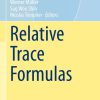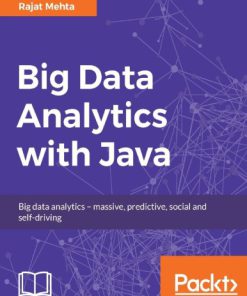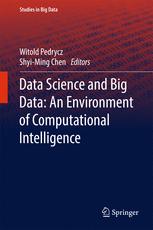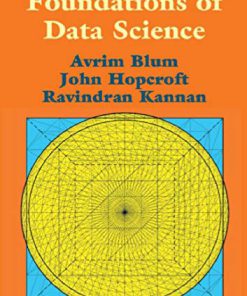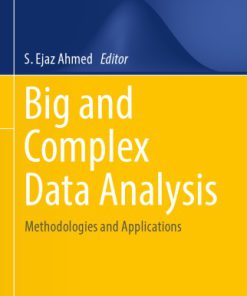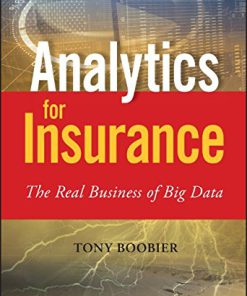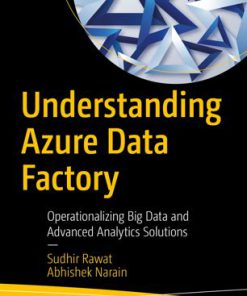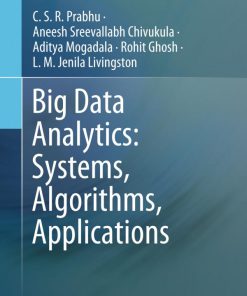Data Science Foundations Geometry and Topology of Complex Hierarchic Systems and Big Data Analytics 1st Edition by Fionn Murtagh 1315350493 9781315350493
$50.00 Original price was: $50.00.$25.00Current price is: $25.00.
Data Science Foundations Geometry and Topology of Complex Hierarchic Systems and Big Data Analytics 1st Edition by Fionn Murtagh – Ebook PDF Instant Download/DeliveryISBN: 1315350493, 9781315350493
Full download Data Science Foundations Geometry and Topology of Complex Hierarchic Systems and Big Data Analytics 1st Edition after payment.
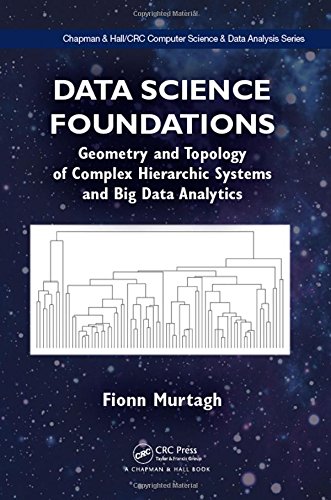
Product details:
ISBN-10 : 1315350493
ISBN-13 : 9781315350493
Author: Fionn Murtagh
“Data Science Foundations is most welcome and, indeed, a piece of literature that the field is very much in need of…quite different from most data analytics texts which largely ignore foundational concepts and simply present a cookbook of methods…a very useful text and I would certainly use it in my teaching.” – Mark Girolami, Warwick University Data Science encompasses the traditional disciplines of mathematics, statistics, data analysis, machine learning, and pattern recognition. This book is designed to provide a new framework for Data Science, based on a solid foundation in mathematics and computational science. It is written in an accessible style, for readers who are engaged with the subject but not necessarily experts in all aspects. It includes a wide range of case studies from diverse fields, and seeks to inspire and motivate the reader with respect to data, associated information, and derived knowledge.
Data Science Foundations Geometry and Topology of Complex Hierarchic Systems and Big Data Analytics 1st Table of contents:
I Narratives from Film and Literature, from Social Media and Contemporary Life
1 The Correspondence Analysis Platform for Mapping Semantics
1.1 The Visualization and Verbalization of Data
1.2 Analysis of Narrative from Film and Drama
1.2.1 Introduction
1.2.2 The Changing Nature of Movie and Drama
1.2.3 Correspondence Analysis as a Semantic Analysis Platform
1.2.4 Casablanca Narrative: Illustrative Analysis
1.2.5 Modelling Semantics via the Geometry and Topology of Information
1.2.6 Casablanca Narrative: Illustrative Analysis Continued
1.2.7 Platform for Analysis of Semantics
1.2.8 Deeper Look at Semantics of Casablanca: Text Mining
1.2.9 Analysis of a Pivotal Scene
1.3 Application of Narrative Analysis to Science and Engineering Research
1.3.1 Assessing Coverage and Completeness
1.3.2 Change over Time
1.3.3 Conclusion on the Policy Case Studies
1.4 Human Resources Multivariate Performance Grading
1.5 Data Analytics as the Narrative of the Analysis Processing
1.6 Annex: The Correspondence Analysis and Hierarchical Clustering Platform
1.6.1 Analysis Chain
1.6.2 Correspondence Analysis: Mapping x2 Distances into Euclidean Distances
1.6.3 Input: Cloud of Points Endowed with the Chi-Squared Metric
1.6.4 Output: Cloud of Points Endowed with the Euclidean Metric in Factor Space
1.6.5 Supplementary Elements: Information Space Fusion
1.6.6 Hierarchical Clustering: Sequence-Constrained
2 Analysis and Synthesis of Narrative: Semantics of Interactivity
2.1 Impact and Effect in Narrative: A Shock Occurrence in Social Media
2.1.1 Analysis
2.1.2 Two Critical Tweets in Terms of Their Words
2.1.3 Two Critical Tweets in Terms of Twitter Sub-narratives
2.2 Analysis and Synthesis, Episodization and Narrativization
2.3 Storytelling as Narrative Synthesis and Generation
2.4 Machine Learning and Data Mining in Film Script Analysis
2.5 Style Analytics: Statistical Significance of Style Features
2.6 Typicality and Atypicality for Narrative Summarization and Transcoding
2.7 Integration and Assembling of Narrative
II Foundations of Analytics through the Geometry and Topology of Complex Systems
3 Symmetry in Data Mining and Analysis through Hierarchy
3.1 Analytics as the Discovery of Hierarchical Symmetries in Data
3.2 Introduction to Hierarchical Clustering, p-Adic and m-Adic Numbers
3.2.1 Structure in Observed or Measured Data
3.2.2 Brief Look Again at Hierarchical Clustering
3.2.3 Brief Introduction to p-Adic Numbers
3.2.4 Brief Discussion of p-Adic and m-Adic Numbers
3.3 Ultrametric Topology
3.3.1 Ultrametric Space for Representing Hierarchy
3.3.2 Geometrical Properties of Ultrametric Spaces
3.3.3 Ultrametric Matrices and Their Properties
3.3.4 Clustering through Matrix Row and Column Permutation
3.3.5 Other Data Symmetries
3.4 Generalized Ultrametric and Formal Concept Analysis
3.4.1 Link with Formal Concept Analysis
3.4.2 Applications of Generalized Ultrametrics
3.5 Hierarchy in a p-Adic Number System
3.5.1 p-Adic Encoding of a Dendrogram
3.5.2 p-Adic Distance on a Dendrogram
3.5.3 Scale-Related Symmetry
3.6 Tree Symmetries through the Wreath Product Group
3.6.1 Wreath Product Group for Hierarchical Clustering
3.6.2 Wreath Product Invariance
3.6.3 Wreath Product Invariance: Haar Wavelet Transform of Dendrogram
3.7 Tree and Data Stream Symmetries from Permutation Groups
3.7.1 Permutation Representation of a Data Stream
3.7.2 Permutation Representation of a Hierarchy
3.8 Remarkable Symmetries in Very High-Dimensional Spaces
3.9 Short Commentary on This Chapter
4 Geometry and Topology of Data Analysis: in p-Adic Terms
4.1 Numbers and Their Representations
4.1.1 Series Representations of Numbers
4.1.2 Field
4.2 p-Adic Valuation, p-Adic Absolute Value, p-Adic Norm
4.3 p-Adic Numbers as Series Expansions
4.4 Canonical p-Adic Expansion; p-Adic Integer or Unit Ball
4.5 Non-Archimedean Norms as p-Adic Integer Norms in the Unit Ball
4.5.1 Archimedean and Non-Archimedean Absolute Value Properties
4.5.2 A Non-Archimedean Absolute Value, or Norm, is Less Than or Equal to One, and an Archimedean Absolute Value, or Norm, is Unbounded
4.6 Going Further: Negative p-Adic Numbers, and p-Adic Fractions
4.7 Number Systems in the Physical and Natural Sciences
4.8 p-Adic Numbers in Computational Biology and Computer Hardware
4.9 Measurement Requires a Norm, Implying Distance and Topology
4.10 Ultrametric Topology
4.11 Short Review of p-Adic Cosmology
4.12 Unbounded Increase in Mass or Other Measured Quantity
4.13 Scale-Free Partial Order or Hierarchical Systems
4.14 p-Adic Indexing of the Sphere
4.15 Diffusion and Other Dynamic Processes in Ultrametric Spaces
III New Challenges and New Solutions for Information Search and Discovery
5 Fast, Linear Time, m-Adic Hierarchical Clustering
5.1 Pervasive Ultrametricity: Computational Consequences
5.1.1 Ultrametrics in Data Analytics
5.1.2 Quantifying Ultrametricity
5.1.3 Pervasive Ultrametricity
5.1.4 Computational Implications
5.2 Applications in Search and Discovery using the Baire Metric
5.2.1 Baire Metric
5.2.2 Large Numbers of Observables
5.2.3 High-Dimensional Data
5.2.4 First Approach Based on Reduced Precision of Measurement
5.2.5 Random Projections in High-Dimensional Spaces, Followed by the Baire Distance
5.2.6 Summary Comments on Search and Discovery
5.3 m-Adic Hierarchy and Construction
5.4 The Baire Metric, the Baire Ultrametric
5.4.1 Metric and Ultrametric Spaces
5.4.2 Ultrametric Baire Space and Distance
5.5 Multidimensional Use of the Baire Metric through Random Projections
5.6 Hierarchical Tree Defined from m-Adic Encoding
5.7 Longest Common Prefix and Hashing
5.7.1 From Random Projection to Hashing
5.8 Enhancing Ultrametricity through Precision of Measurement
5.8.1 Quantifying Ultrametricity
5.8.2 Pervasiveness of Ultrametricity
5.9 Generalized Ultrametric and Formal Concept Analysis
5.9.1 Generalized Ultrametric
5.9.2 Formal Concept Analysis
5.10 Linear Time and Direct Reading Hierarchical Clustering
5.10.1 Linear Time, or O(N) Computational Complexity, Hierarchical Clustering
5.10.2 Grid-Based Clustering Algorithms
5.11 Summary: Many Viewpoints, Various Implementations
6 Big Data Scaling through Metric Mapping
6.1 Mean Random Projection, Marginal Sum, Seriation
6.1.1 Mean of Random Projections as A Seriation
6.1.2 Normalization of the Random Projections
6.2 Ultrametric and Ordering of Rows, Columns
6.3 Power Iteration Clustering
6.4 Input Data for Eigenreduction
6.4.1 Implementation: Equivalence of Iterative Approximation and Batch Calculation
6.5 Inducing a Hierarchical Clustering from Seriation
6.6 Short Summary of All These Methodological Underpinnings
6.6.1 Trivial First Eigenvalue, Eigenvector in Correspondence Analysis
6.7 Very High-Dimensional Data Spaces: Data Piling
6.8 Recap on Correspondence Analysis for Following Applications
6.8.1 Clouds of Points, Masses and Inertia
6.8.2 Relative and Absolute Contributions
6.9 Evaluation 1: Uniformly Distributed Data Cloud Points
6.9.1 Computation Time Requirements
6.10 Evaluation 2: Time Series of Financial Futures
6.11 Evaluation 3: Chemistry Data, Power Law Distributed
6.11.1 Data and Determining Power Law Properties
6.11.2 Randomly Generating Power Law Distributed Data in Varying Embedding Dimensions
6.12 Application 1: Quantifying Effectiveness through Aggregate Outcome
6.12.1 Computational Requirements, from Original Space and Factor Space Identities
6.13 Application 2: Data Piling as Seriation of Dual Space
6.14 Brief Concluding Summary
6.15 Annex: R Software Used in Simulations and Evaluations
6.15.1 Evaluation 1: Dense, Uniformly Distributed Data
6.15.2 Evaluation 2: Financial Futures
6.15.3 Evaluation 3: Chemicals of Specified Marginal Distribution
IV New Frontiers: New Vistas on Information, Cognition and the Human Mind
7 On Ultrametric Algorithmic Information
7.1 Introduction to Information Measures
7.2 Wavelet Transform of a Set of Points Endowed with an Ultrametric
7.3 An Object as a Chain of Successively Finer Approximations
7.3.1 Approximation Chain using a Hierarchy
7.3.2 Dendrogram Wavelet Transform of Spherically Complete Space
7.4 Generating Faces: Case Study Using a Simplified Model
7.4.1 A Simplified Model of Face Generation
7.4.2 Discussion of Psychological and Other Consequences
7.5 Complexity of an Object: Hierarchical Information
7.6 Consequences Arising from This Chapter
8 Geometry and Topology of Matte Blanco’s Bi-Logic in Psychoanalytics
8.1 Approaching Data and the Object of Study, Mental Processes
8.1.1 Historical Role of Psychometrics and Mathematical Psychology
8.1.2 Summary of Chapter Content
8.1.3 Determining Depth of Emotion, and Tracking Emotion
8.2 Matte Blanco’s Psychoanalysis: A Selective Review
8.3 Real World, Metric Space: Context for Asymmetric Mental Processes
8.4 Ultrametric Topology, Background and Relevance in Psychoanalysis
8.4.1 Ultrametric
8.4.2 Inducing an Ultrametric through Agglomerative Hierarchical Clustering
8.4.3 Transitions from Metric to Ultrametric Representation, and Vice Versa, through Data Transformation
8.4.4 Practical Applications
8.5 Conclusion: Analytics of Human Mental Processes
8.6 Annex 1: Far Greater Computational Power of Unconscious Mental Processes
8.7 Annex 2: Text Analysis as a Proxy for Both Facets of Bi-Logic
9 Ultrametric Model of Mind: Application to Text Content Analysis
9.1 Introduction
9.2 Quantifying Ultrametricity
9.2.1 Ultrametricity Coefficient of Lerman
9.2.2 Ultrametricity Coefficient of Rammal, Toulouse and Virasoro
9.2.3 Ultrametricity Coefficients of Treves and of Hartman
9.2.4 Bayesian Network Modelling
9.2.5 Our Ultrametricity Coefficient
9.2.6 What the Ultrametricity Coefficient Reveals
9.3 Semantic Mapping: Interrelationships to Euclidean, Factor Space
9.3.1 Correspondence Analysis: Mapping x2 into Euclidean Distances
9.3.2 Input: Cloud of Points Endowed with the Chi-Squared Metric
9.3.3 Output: Cloud of Points Endowed with the Euclidean Metric in Factor Space
9.3.4 Conclusions on Correspondence Analysis and Introduction to the Numerical Experiments to Follow
9.4 Determining Ultrametricity through Text Unit Interrelationships
9.4.1 Brothers Grimm
9.4.2 Jane Austen
9.4.3 Air Accident Reports
9.4.4 DreamBank
9.5 Ultrametric Properties of Words
9.5.1 Objectives and Choice of Data
9.5.2 General Discussion of Ultrametricity of Words
9.5.3 Conclusions on the Word Analysis
9.6 Concluding Comments on this Chapter
9.7 Annex 1: Pseudo-Code for Assessing Ultrametric-Respecting Triplet
9.8 Annex 2: Bradley Ultrametricity Coefficient
10 Concluding Discussion on Software Environments
10.1 Introduction
10.2 Complementary Use with Apache Solr (and Lucene)
10.3 In Summary: Treating Massive Data Sets with Correspondence Analysis
10.3.1 Aggregating Similar or Identical Profiles Is Welcome
10.3.2 Resolution Level of the Analysis Carried Out
10.3.3 Random Projections in Order to Benefit from Data Piling in High Dimensions
10.3.4 Massive Observation Cardinality, Moderate Sized Dimensionality
10.4 Concluding Notes
People also search for Data Science Foundations Geometry and Topology of Complex Hierarchic Systems and Big Data Analytics 1st:
data science foundations
data science foundations answers
data science foundations fundamentals (2019) answers
foundations of data science and engineering
geometry for data science
Tags: Data Science, Foundations Geometry, Topology, Complex Hierarchic, Big Data Analytics, Fionn Murtagh
You may also like…
Computers
Data Science and Big Data An Environment of Computational Intelligence 1st Edition Witold Pedrycz
Computers - Organization and Data Processing
Computers - Cybernetics Computers - Applications & Software
From Big Data to Big Profits Success with Data and Analytics 1st Edition Russell Walker
Science (General)
Big and Complex Data Analysis Methodologies and Applications Ahmed
Business & Economics
Big data and analytics for insurers 1st Edition Boobier 1000523578 9781000523577
Computers - Programming
Computers - Organization and Data Processing
Computers - Databases
Big Data Analytics Systems Algorithms Applications C.S.R. Prabhu


